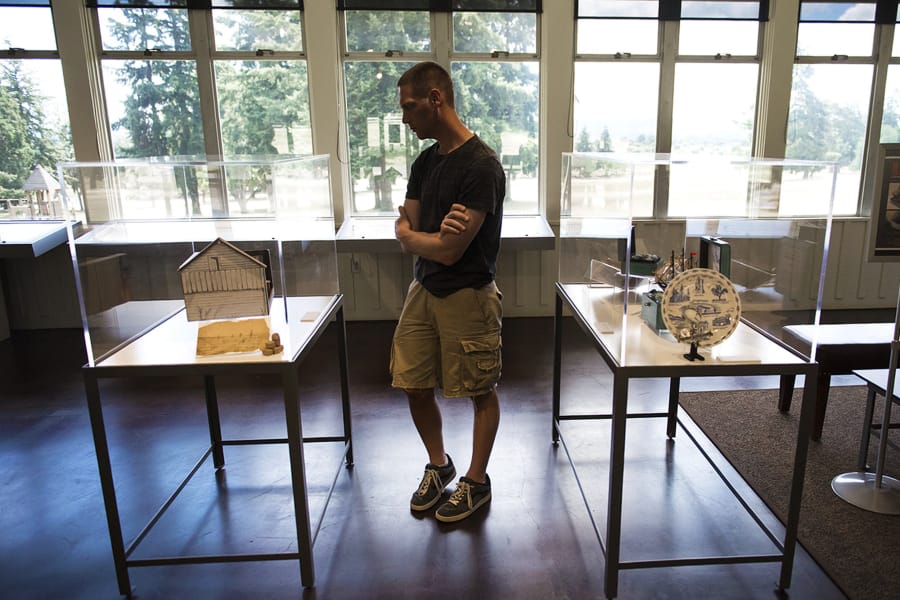“Why would you want to leave paradise?”
That’s what went through the mind of artist Amy Kapuanani Antonio-Claussen as she considered the people who left Hawaii — where she spent much of her childhood — for jobs in the Pacific Northwest in the 1800s.
Many of the Kanakas, as they were called, wound up working for the Hudson’s Bay Company at Fort Vancouver. And that’s where Antonio-Claussen will introduce her exhibit — Na Kanaka — this afternoon.
The 2 p.m. presentation at the Fort Vancouver Visitor Center, 1501 E. Evergreen Blvd. in Vancouver, is free. The exhibit will be on view until January 2019.
The exhibit focuses on the little-known stories of the native Hawaiians who worked in the Pacific Northwest fur trade from 1811 to the 1860s.
If You Go
• What: Na Kanaka: An art exhibit about Hawaiians at Fort Vancouver during the fur-trading era.
• When: Talk by artist Amy Kapuanani Antonio-Claussen is at 2 p.m. today; exhibit runs until January 2019.
• Where: Fort Vancouver Visitor Center, 1501 E. Evergreen Blvd., Vancouver.
The Portland artist’s exhibit will explore some of the reasons those Hawaiians sought their fortunes in the Pacific Northwest. Their path was the American and European ships that came to Hawaii to restock food and water, to make repairs and to recruit seamen.
“Hawaiians have always been seafarers. They’re at home in the water,” Antonio-Claussen said.
Other Kanakas were hired out by their king as contract workers.
While hundreds of Hawaiians lived in and around Fort Vancouver as laborers and servants, “There is not a lot of archaeological representation,” Antonio-Claussen said.
Ledger books at the company store, letters of officers and visitors, and burial records at a nearby cemetery all list Anglicized names of the Kanakas.
Those few whose names made it into historical accounts include William Kaulehelehe and his wife, Mary Ka’ai. In the summer of 2013, researchers did an archaeological dig at the site where their house once stood. The preacher and his wife lived in the former Kanaka Village just west of the reconstructed Fort Vancouver stockade.
Another well-known Hawaiian was John Coxe, a swineherd who lived and worked for almost 40 years at Fort Vancouver.
As far as her own personal journey goes, Antonio-Claussen left her Hawaiian paradise when the family moved to Michigan because of what she called economics and family responsibilities.
She has been a Portland resident for about 20 years, which has given her a chance to reconnect with Hawaiian culture. She is a member of the advisory council of the Ke Kukui Foundation, a Vancouver-based nonprofit group that shares Polynesian and Hawaiian arts and culture.
The group works to strengthen the Hawaiian community’s relationship with Fort Vancouver National Historic Site and honor its Kanaka heritage. Foundation members, including Antonio-Claussen, participated in a video production that is part of a multimedia smartphone application at Fort Vancouver.




